With the rapid development of artificial intelligence and the Internet of Things (AIOT), the application of laser modules has ushered in a broader development space. Traditional laser modules are mostly visible light, mainly used in the field of indication and sensors, such as laser pointers and handheld laser rangefinders, which are mainly convenient for human eyes to see. Infrared laser module, as a substitute for visible light, has the characteristics of monochromaticity and narrow bandwidth, which can simplify image processing, match specific receiving spectrum, and improve the overall efficiency of the system. Therefore, it is very useful in many sensors of AIOT. In addition, with the wide application of AIOT, in order to reduce and avoid light pollution, invisible infrared laser modules are also an ideal choice.
In robot navigation and obstacle avoidance, 808nm, 850nm and 940nm are commonly used wavelengths, which are invisible to the human eye. They have been widely used in sweepers, 3D scanning, machine vision, etc. Traditional laser modules are mostly edge-emitting lasers. Due to the higher cost, lower reliability, and larger size of edge-emitting lasers, they cannot well meet the growing market demand for AIOT. VCSEL vertical cavity surface emitting lasers have the advantages of low cost, high reliability, surface packaging, etc., and become the best choice for replacing edge emitting lasers in AIOT applications.
As a pioneer and leader in the VCSEL industry, Brightlaser continues to expand the application of VCSELs in various fields. According to the requirements of laser modules required by AIOT sensors, Brightlaser has designed and mass-produced a variety of 808nm, 850nm and 940nm VCSEL chips. With more than 10 years of experience in the field of laser module products, we provide customers with one-stop, diversified VCSEL laser module products and technical support. Brightlaser VCSEL laser modules have been widely used in 3D scanning, LiDAR, machine vision and laser medical fields around the world, and have been widely recognized by customers.
According to different applications, below to introduce some examples of laser module.
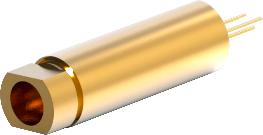 |
Dot laser module for triangular laser scanning LiDAR
The triangular laser scanning LiDAR requires a collimated point laser module, the power is within 1mW, and the wavelength is usually 808nm and 850nm.
|
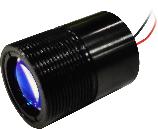 |
Laser modules for safety light curtains
This is a long-distance light curtain with small divergence angle, wavelength 940nm, divergence angle 0.8mrad, can transmit 300-500 meters, and can be used as safety light curtain light source for railway station and subway station platform.
|
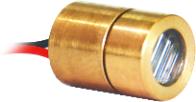 |
This line module can be used as a short-range and large-scale safety light curtain light source. With a wavelength of 940nm and a divergence angle of 120°, it can cover a range of 0.3-5 meters. Brightlaser provides a series of modules with different power level.
|
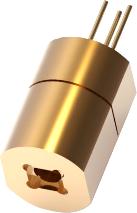 |
Modules for Laser Obstacle Avoidance LiDAR
This line laser module is widely used in laser obstacle avoidance LiDAR. The distance is from 0.3-2 meters, and the wavelengths are 808nm, 850nm and 940nm. It has the advantages of thin and uniform lines and high power density. The line length is 45°, 60°, 90°, 110°, 120°, 130° and 160°, widely used in sweeping robots, screen door monitoring and other scenarios.
|
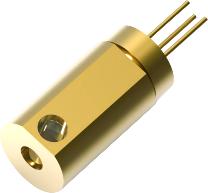 |
Laser modules for scanning
This line laser module is widely used in the field of 3D scanning, including consumer and machine vision applications. The wavelengths are 808nm, 850nm and 940nm, with thin & long lines, no speckle, and high-quality 3D scanning accuracy.
|
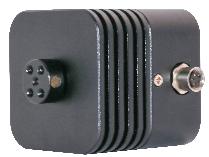 |
Laser Modules for Machine Vision
This line laser module is specially designed for machine vision. The wavelengths of 660nm, 808nm, and 850nm are specially used to detect small defects such as small scratches. It adopts a good heat dissipation design and has the advantages of all-weather work and high reliability.
|
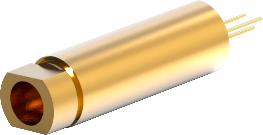 |
Collimated Laser Modules for dTOF
This collimating point module has high peak power, nanosecond response time, power is 10W, 20W, 50W, 100W, and wavelengths are 850nm and 940nm, which can replace traditional edge-emitting PLDs.
|
In addition, in order to further miniaturize laser module, Brightlaser invented SMT laser module by using micro-optic technology, which greatly reduced the dimensions of laser module, with a size of 3.50(W)X3.50(L )X3.50(H), while improving performance, such as coaxiality.
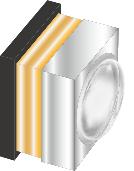 |
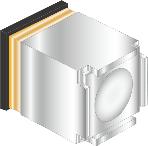 |
|
3-5mrad collimation point module |
100° line module |
Extended Learning: How To Efficiently Formulate Laser Modules
Laser module can be with a wide range of wavelengths, power levels, and beam shapes. Laser modules have excellent optical characteristics, like high uniformity, high power density, durability and stability, high precision, and very small size. They are ideal for machine vision, 3D scanning, indication, positioning, measurement and other fields. They are used in Consumer Electronics, Life Sciences and Industrial Applications.
How to choose an ideal laser module for a system is a complex task. To achieve best performance, it is necessary to consider the operating environment, module size, durability, laser safety, and cost constraints. These elements are usually independent of each other, but engineers need to make various trade-offs and compromises between performance priority and cost constraints.
Below, we will introduce how to efficiently and accurately formulate the laser module specifications required by the system and the best OEM laser module solutions.
1. Wavelength selection
Wavelength is the core of laser module design. Choosing a suitable laser diode is the first step to achieve a successful design.
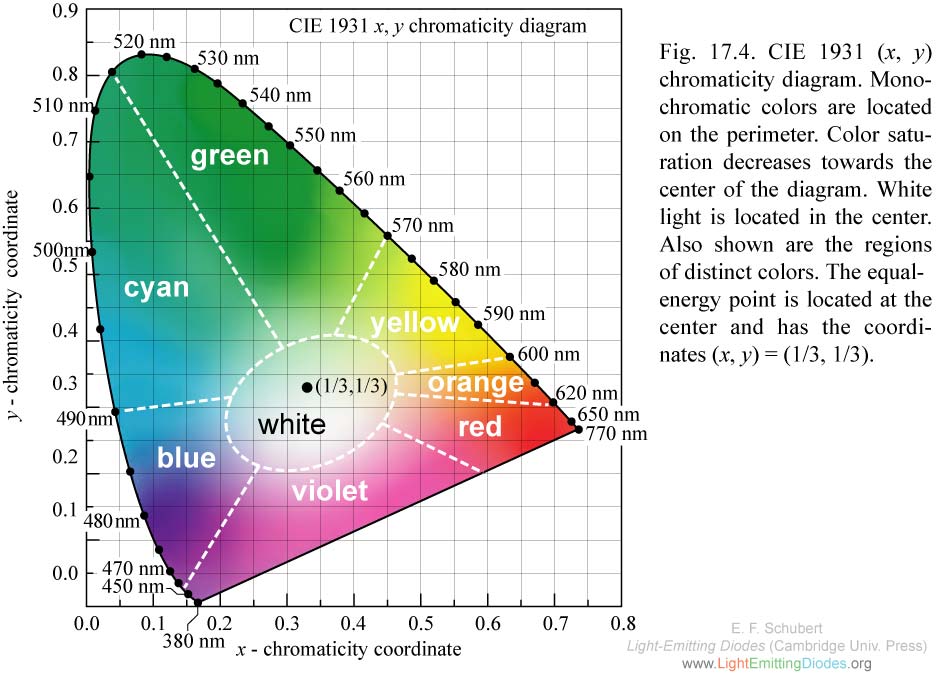
Source: The CIE 1931 color space chromaticity diagram
The human eye can respond to wavelengths between approximately 400 and 700 nm. Most vision applications use light in this range, but some applications require cameras that are sensitive to the infrared or ultraviolet spectrum; many CCD or CMOS-based machine vision cameras can detect light up to about 1000 nm; some sensors use near-infrared illumination, it is based on the enhanced sensitivity between 700 and 1000 nm. In high-capacity markets such as consumer electronics, it may be more cost-effective to select laser diodes of common wavelengths for the system.
2. Output power considerations
The choice of optical power usually needs to consider system operating conditions, laser safety and life, and cost factors.
3. Optical design
The purpose of optical design is to provide the beam shape and size required by the system within the working distance range; by selecting appropriate laser light source, redundant optical components can be simplified, and at the same time, the cost can be reduced without sacrificing performance.
4. Thermal Management
The working environment temperature will affect the output stability and lifetime of the laser, so thermal management is an important consideration. When designing and using laser modules, the system needs sufficient heat dissipation. Choosing a laser diode with low temperature sensitivity and wide operating temperature is particularly important for system performance.
5. Mechanical Principles
The laser module is a combination of multiple components, including a laser diode, one or more optical components, and electronic components (to control the output of the laser diode). These components are encapsulated in module house to provide protection while maintaining precise positioning with each other under normal operating, storage, and transportation conditions. Under the trend of module miniaturization, it is essential to realize the performance of modules by cooperating with high-quality manufacturers with professional experience, in response to customization requirements of OEM and end customers.
6. Drive circuit
The design of most laser modules includes a drive circuit to control and stabilize the output power conditions and the service life of the parts within the working range.
7. Partner selection
The success of the laser module involves the development, design, manufacturing and testing processes. OEM customers are required to work closely with Laser module manufacturer in terms of design and manufacturing process.
Laser module manufacturers' abilities of accurately understanding customer requirements, professional experience, product development capabilities, complete production and testing facilities, and fast-paced efficiency will help OEM customers successfully manufacture ideal laser modules.
Brightlaser provides durable, compact, high-performance laser modules for various applications such as machine vision, 3D scanning, LiDAR , measurement, and positioning. Along with excellent optical characteristics and stability, it also be available in multiple wavelengths, power levels, beam shapes, and dimensions according to customizable requirements.
Brightlaser is a semiconductor manufacturer with ISO9001 qualified. Its products have passed CE, RoHS, REACH and the most stringent AEC-Q102 certification. It owns complete production and testing facilities, intensive professional experience and know-how, sufficient production capacity, and the fastest delivery time; Provide the best cost-effective performance, and the most competitive products.
Innovations for Freedom
Brightlaser was founded in 2014, is a global pioneer supplier in VCSEL technology from components, sensors, to total solutions for AI/IoT applications including Optical Communication, Consumer Electronics, ADAS, Machine Vision, Telecom, Robotics, Smart House, Surveillance System, etc.
As a high-tech company, Brightlaser possesses its own VCSEL intellectual properties in wafer design, advanced chip process, and applications. Brightlaser headquartered in Hong Kong, established branch offices in Shen Zhen and Zhong Shan of China. The factory located in Zhong Shan covers footprint of 160,000 Sq. ft., equipped with globally state- of-art GaAs techniques, and the first 6-inch VCSEL chip fab & packaging line in mainland China.
In recent years, Brightlaser has caught up extremely quickly with all the opportunities the market has been giving, is becoming increasingly competitive. Currently, we are working with world-wide-leading partners and customers in technologies, marketing, and sales.
To cope with the rapidly growing, we are seeking professional dealers, distributors to join this promising field. As a self-driven, proactive, taking initiative, team player, you are welcome to our fast-paced, dynamic team of collaborators.












